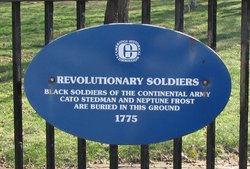“I am hurried thro’ the whole Army”
Today I’m skipping ahead, past his treatment of Sylvanus Lowell’s dire injuries, to follow Jackson to the siege of Boston.
In addition to being Portsmouth’s leading apothecary, physician, surgeon, and inoculator, Dr. Jackson was a local military expert. He was a militia captain. His modern biographer, J. Worth Estes, wrote that he “helped design the defenses of Portsmouth Harbor,” though I don’t know if that was before or after the Revolutionary War.
In December 1774 Dr. Jackson reportedly led one of the militia companies that stormed Fort William and Mary in Portsmouth’s harbor, arguably the first fight of that war. That raid yielded gunpowder and cannon for the Patriots.
After the first undeniable fight of that war, in April 1775, the doctor went to Cambridge and, he wrote, “lent my assistance to the wounded.” He returned to Portsmouth with “a plan of [Adino] Paddock’s Field Pieces, Carriages, and mounted the three Brass pieces found in Jno. Warner’s Store, belonging to Col. [David?] Mason.” On the night of 30–31 May, the doctor led scores of men to the undefended battery at Jerry’s Point in New Castle and seized eight more large cannon for the Patriot cause.
In June 1775, Jackson received word of the Battle of Bunker Hill. He immediately rode down to the siege lines north of Boston, arriving thirteen hours after hearing the news and about forty-eight hours after the fight.
Jackson offered medical help to Gen. Nathaniel Folsom, then commanding the New Hampshire regiments. Later he wrote about the young regimental surgeons he found on duty:
not one of these were possessed of even a needle, or any other proper Instruments, had they been ever so well equipped, the matter would not have been much mended. I amputated several limbs and extracted many balls the first night,After Jackson was home about ten days, several regimental commanders stationed north of Boston wrote, asking him to return. The doctor was back on the front by mid-July, writing:
the next day I was hurried to all quarters Dr. [Benjamin] Church having got notice of my being at Mistick, [he] the best Surgeon on the Continent being obliged to supply poor [Dr. Joseph] Warren’s place at the Congress forced the principal of the wounded on me . . . .
I went on with this fatigue 15 days, when a violent inflammation in my eyes forced me to return to Portsmo’. I lost only two of my patients one Col. [Thomas] Gardiner, of Cambridge wounded in his groin, the other one [James] Hutchinson a man from Amhurst [New Hampshire] whose thigh I amputated close to his body. He survived 7 days, and would have finally recovered had not the fates took exceptions to his name.
tho’ I act in capacity of Surgeon General to [Gen. John] Sullivan’s Brigade more particularly, I am hurried thro’ the whole Army. Every other day I attend Church to Waltham to dress Coll’s. [Jonathan] Brewer and [William] Buckminster, who are still languishing with the wounds they received at Bunker’s Hill.Sullivan, now in charge of the New Hampshire troops, and others were trying to get Jackson some sort of official commission and salary.
Once in a while a person breaks out with the small Pox and are removed. Not a Surgeon in Sullivan’s Brigade has had the Disease.
I receive my authority to act from the General, but when or how much my pay will be, I know not.
TOMORROW: The Continental surgeon general.








